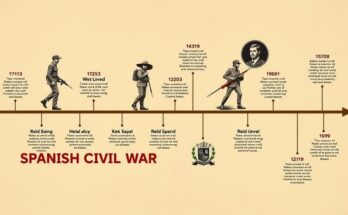A renewed offensive by Syrian opposition forces has led to significant territorial gains in Aleppo, reviving global attention to the protracted civil war that began in 2011. Key players include the Syrian government, supported by Iran and Russia, and the insurgents primarily backed by Turkey. The conflict displays a complicated array of alliances and confrontations, particularly as U.S.-backed Syrian Democratic Forces also maintain control over substantial eastern regions.
Syrian opposition fighters have regained control over significant portions of Aleppo amid renewed hostilities, stirring international focus on the protracted civil war that began in 2011. The recent advances by insurgents, notably the Hayat Tahrir al-Sham (HTS), have taken advantage of weakened opposition forces from Russia and Iran, leading to fierce confrontations that have escalated since a ceasefire in 2020. As airstrikes from Syrian and Russian forces aim to suppress the insurgent push, the conflict sees a complex interplay amongst multiple stakeholders including U.S. forces, Kurdish-led factions, and various insurgent groups supported by Turkey.
The Syrian civil war, lasting over a decade, has become a theatre for foreign intervention, notably involving Russian, Iranian, U.S., and Turkish military presences. The conflict initially erupted in response to President Bashar Assad’s regime, spurring both domestic and international complications. Currently, Assad’s forces continue to hold key cities like Damascus but face substantial challenges as they grapple with rebel gains in Aleppo, a city seen as vital for opposition control and government authority.
Key players in this multifaceted conflict include the Syrian government, propped up by Russia and Iran, which maintain significant military resources in the region. The Syrian Democratic Forces (SDF), backed by U.S. forces, control substantial eastern territories while engaging with factions of the Islamic State militant group. On the adversarial side, the HTS, which previously aligned itself with al-Qaida, has rebranded to cultivate a more moderate image while still exerting control over areas in northwest Syria. Notably, Turkey’s involvement has added another layer to the ongoing conflicts, particularly in regions near its southern border with Syria.
The Syrian civil war, ignited in 2011 following the Arab Spring protests against President Bashar Assad, has drawn multiple nations into its turmoil, redefining geopolitical alliances and military strategies. Various rebel groups have emerged, supported by differing foreign powers, complicating the resolution of conflict. Key players include the Syrian government forces, bolstered by Iran and Russia, and various opposition groups receiving support from the United States and Turkey. This complex matrix has led to shifting territorial control and changing dynamics on the ground, leading to renewed aggressions as evidenced by the recent offensive in Aleppo.
In summary, the resurgence of hostilities in Aleppo highlights the fragility of the ceasefire established in 2020 and the ongoing challenges faced by all involved stakeholders in the Syrian civil war. As rebel forces leverage existing vulnerabilities in the government’s defenses, the implications for regional stability remain profound. The interplay among major international players, alongside the persistent fragmentation of local groups, illustrates the enduring complexity of the Syrian conflict that continues to evolve amid shifting alliances and strategic interests.
Original Source: apnews.com




